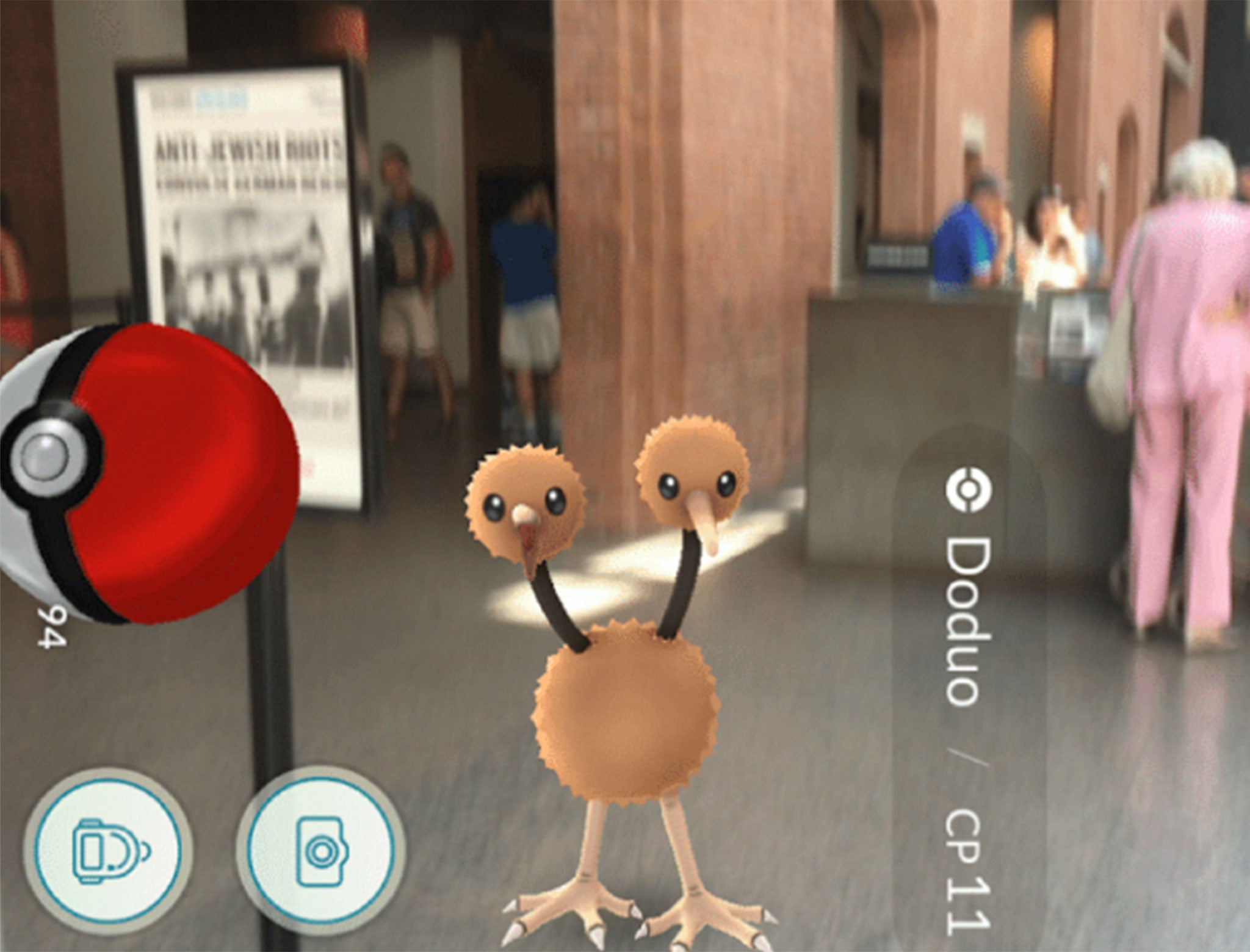Pokémon Go players asked to stop catching digital creatures in Holocaust Museum
There’s at least one place that would really like to keep Pokémon out

Your support helps us to tell the story
From reproductive rights to climate change to Big Tech, The Independent is on the ground when the story is developing. Whether it's investigating the financials of Elon Musk's pro-Trump PAC or producing our latest documentary, 'The A Word', which shines a light on the American women fighting for reproductive rights, we know how important it is to parse out the facts from the messaging.
At such a critical moment in US history, we need reporters on the ground. Your donation allows us to keep sending journalists to speak to both sides of the story.
The Independent is trusted by Americans across the entire political spectrum. And unlike many other quality news outlets, we choose not to lock Americans out of our reporting and analysis with paywalls. We believe quality journalism should be available to everyone, paid for by those who can afford it.
Your support makes all the difference.Almost everywhere you turn, it seems like people have their eyes glued to smartphone screens playing Pokémon Go. Since its launch last week, the app has quickly become a cultural phenomenon that has fans of all ages hunting around their neighbourhoods for collectible digital creatures that appear on players' screens almost like magic as they explore real-world locations.
But there's at least one place that would really like to keep Pokémon out: the United States Holocaust Museum.
The Museum itself, along with many other landmarks, is a “PokeStop” within the game – a place where players can get free in-game items. In fact, there are actually three different PokeStops associated with various parts of the museum.
“Playing the game is not appropriate in the museum, which is a memorial to the victims of Nazism,” Andrew Hollinger, the museum's communications director, told The Washington Post. “We are trying to find out if we can get the museum excluded from the game.”
The US Holocaust Museum's plight highlights how apps that layer a digital world on top of the real one, or so-called augmented reality games, can come with unforeseen consequences and raises questions about how much control the physical owner of a space can exert as those two worlds intersect.
One image circulating online appears to show a player encountering an unsettling digital critter inside the museum: a poison gas-type Pokémon called Koffing floating by a sign for the museum's Helena Rubinstein Auditorium. Clearly, it's an awkward if not offensive thing to find in a place dedicated to making sure the world never forgets those killed in the gas chambers at Nazi death camps.
The image, which appears to have originated from a now deleted post on the photo-sharing site imgur, might be a hoax: that particular Pokémon didn't appear nearby when this reporter visited the museum on Monday, although the specific Pokémon that appears in each location does vary from time to time. Mr Hollinger said that the museum is aware of and concerned about the potential Koffing appearance.
If a player really did encounter a Koffing inside the museum, it seems unlikely that Niantic Labs – the developers behind the game – would have made it show up there on purpose. But even the spectre of that particular Pokémon spawning there raises questions about what sort of controls the game has in place to stop its fantasy world from causing distress in the real world, even if that distress is unintentional.
Niantic did not immediately respond to inquiries about the alleged Koffing sighting or if there was any way to honour the Holocaust Museum's request to stop Pokemon from popping up inside its building.
Mr Hollinger stressed that the museum is generally pro-technology and encourages visitors to use social media to share how their experiences with the exhibits moved them. “But this game falls very much outside that,” he said. He added that it seemed disrespectful, especially in more solemn parts of the complex like the Hall of Remembrance.
On Monday afternoon, there were plenty of people inside the museum who seemed to be distracted from its haunting exhibits as they tried to “catch 'em all.” A player even used a lure module, a beacon that attracts Pokémon to a specific PokeStop, on the museum's marker – making double-headed bird-like creatures dubbed Doduos and rodent-like Rattatas that practically swarm on users' screens.
The player behind the lure, a 30-year-old visiting from North Carolina named Dustin who declined to share his last name with The Washington Post for privacy reasons, was excited to catch a crustacean-like Krabby while waiting in the museum's lobby with a group of friends to pick up tickets for a scheduled tour of the exhibits.
Although the museum is uncomfortable with its Pokémon infestation, most of the players building up their digital critter collection inside the building, at least, didn't seem to mean any disrespect.
“It's not like we came here to play,” said Angie, a 37-year-old member of Dustin's huddle who also declined to share her last name for privacy reasons, “But gotta catch 'em all.”
© The Washington Post
Join our commenting forum
Join thought-provoking conversations, follow other Independent readers and see their replies
Comments